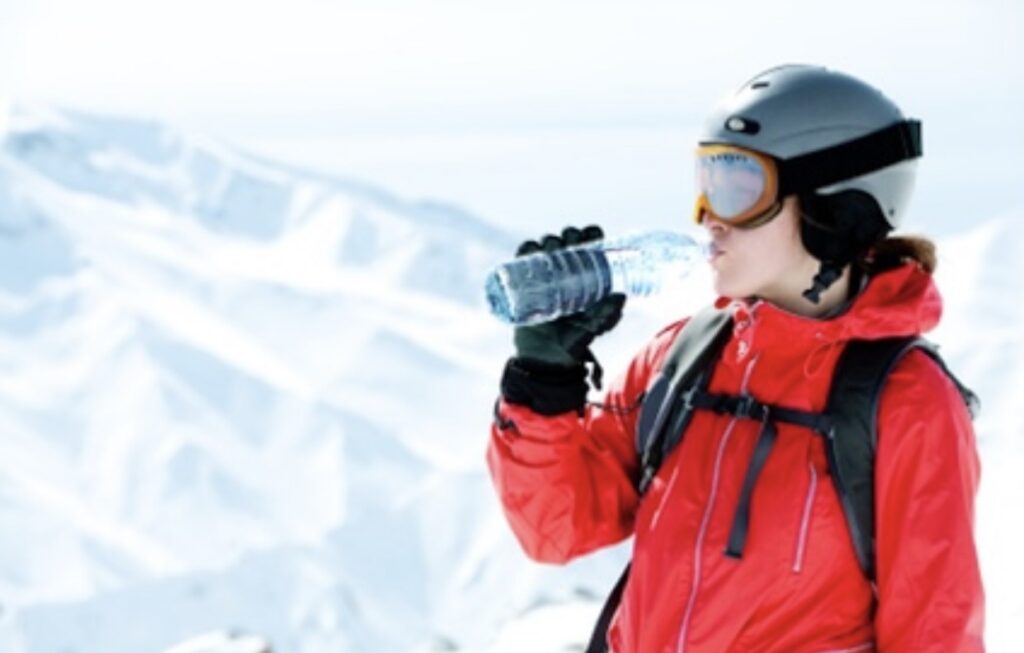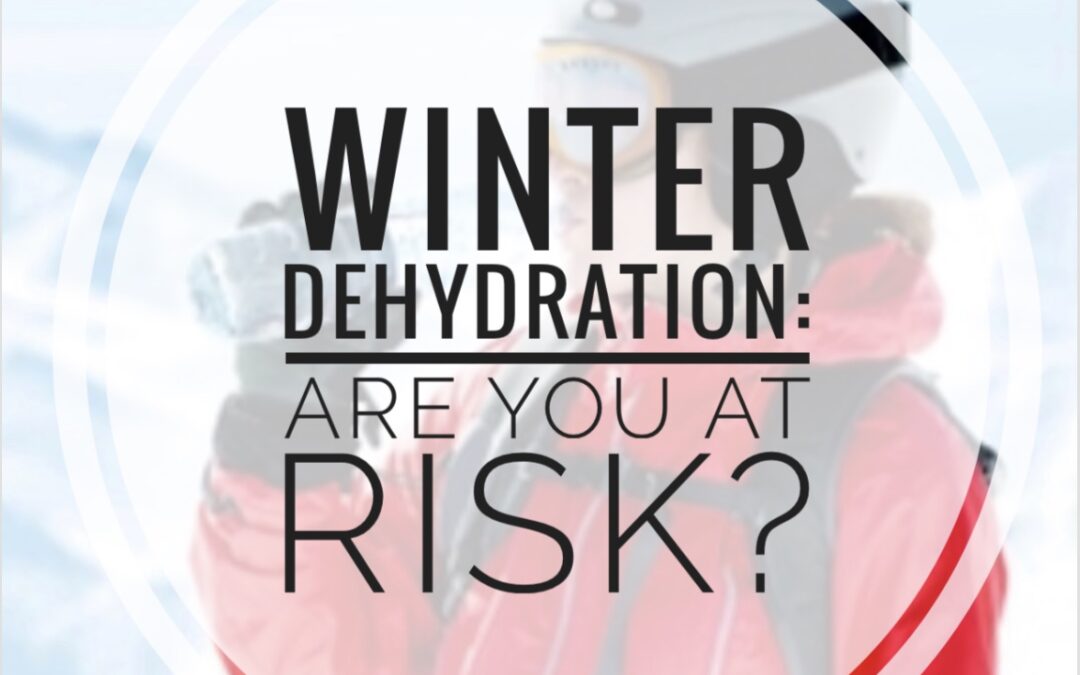The cold, dry air, layers of clothing and a reduced thirst mechanism all make winter dehydration a risk for athletes. What athletes need to know, and tips to prevent it.

Did you know, the risk of dehydration in the winter is just as similar to that in the summer?
If you exercise outside when it’s hot and humid, you will likely see sweat forming on your body. Even if you don’t feel your fluid losses, you can see it. That visual reminds you to drink.
In the exercise outside in the winter months, you’re likely bundled up in layers of clothing. The air is dry and cold, so you might be able to see your breath when you breathe out. Chances are, though, that you can’t see the sweat collecting in your clothes. You lose a lot of body water when you exercise in those conditions, but you might not be aware.
Why Winter Dehydration Is A Risk For Athletes
Fluid losses in the winter are less obvious than in the summer, but that doesn’t make them any less important. Dehydration can happen in the winter, just as it can in the summer – and preventing it is just as critical to your performance. When you understand how and where your body losses fluid in the cold, you ‘ll be more aware of it. That way, you can prevent it from happening. Here’s what you need to know about winter dehydration.
The Air Is Dry And Cold
When you breathe in, your body humidifies the air. That’s the reason you can see your breath when you breathe out. What you may not realize, though, is that respiratory water loss increases in the cold weather, due to the low humidity and the increased ventilations rate.
The cold conditions also make for fast evaporative sweat loss. If any part of your body is exposed, it won’t be sweaty for long. But, that doesn’t mean you aren’t losing body water. You just can’t see it.
You’re Clothing Collects Fluid Losses
Depending on how many layers you wear, you may be carrying a considerable amount of extra fluid without knowing it. That’s because, when you sweat in the cold, that sweat collects in your clothing just as it does when it’s hot out. The difference is, you can’t see it. The extra layers of clothing hide the wet underlayer, making it hard to detect sweat losses. In a cold environment, it is possible for sweat rates to exceed 1 liter per hour due to the warm, humid micro environment created underneath your clothing.
You Don’t Feel Thirsty
Thirst is the main mechanism for increasing fluid intake. In the summer, when you become dehydrated, your bodies elicit a thirst response, helping to prevent dehydration. In the winter, however, your body’s ability to elicit the response is hindered. Without getting into the physiology, the way your bodies respond to cold temperatures alters the brain’s ability to detect dehydration. When you aren’t thirsty, you may not drink, which increases your risk for dehydration.

Tips To Prevent Winter Dehydration
Dehydration can seriously hinder athletic performance and wellbeing. The best way to prevent it is to understand how and why, and take preventative measures. Adopt these tips to prevent winter dehydration.
Hydrate Early And Often
Whether it’s summer, or winter, all athletes should follow the recommended fluid guidelines for athletes. Drink ~16 ounces of non-carbonated, non-caffeinated fluid before you start exercise, to ensure that you are fully hydrated. During exercise, drink 4-8 oz of liquid every 15-20 minutes to maintain a healthy hydration status. After exercising, it’s critical to replace lost fluids. The best way to determine your re-hydration needs is to weight yourself before and after your activity, and drink 16-24 oz of fluid per pound lost. I share more specific guidelines in my post about healthy hydration for hockey players.
Drink Sports Drinks When Needed
If your exercise or activity will last longer than 1 hour, you should consider a sports drink instead of plain water. That way, you can replenish lost fluid and electrolytes, while providing your body a source of fuel, too.
Know The Signs Of Dehydration
Being able to recognize the signs of dehydration is key in preventing it. While you should never wait until you feel dehydrated to drink, the sooner you recognize it, the sooner you can begin to replace your fluid losses. Some signs of dehydration are:
- Early fatigue
- Increased breathing and heart rate
- Dizziness
- Headache
- Dark yellow urine (you want it to be almost clear)
If you start to feel any of those symptoms, you should immediately seek fluid replacement. It’s also important to understand that your symptoms could be a sign of something else. Talk to your coach, trainer or teammates about what you are feeling, and if necessary, seek medical help right away.
Winter dehydration is a real and serious issue. The next time you head out to the cold to exercise, bundle up and be sure to drink up.


 Hi, I’m Heather – a registered dietitian, busy mom, consultant, adventure junkie and travel addict who has mastered living healthy on the go. My blog is where I share simple recipes and healthy living tips to help and inspire others to live their best life.
Hi, I’m Heather – a registered dietitian, busy mom, consultant, adventure junkie and travel addict who has mastered living healthy on the go. My blog is where I share simple recipes and healthy living tips to help and inspire others to live their best life.